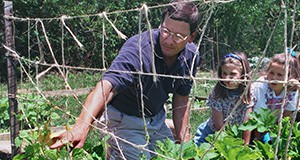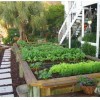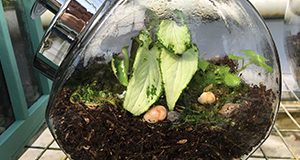A terrarium is a collection of small plants growing in a clear, usually enclosed, container. This three-page fact sheet walks you through the process of creating your own terrarium. Written by Amy Vu and Sydney Park Brown, and published by the Environmental Horticulture Department.
http://edis.ifas.ufl.edu/mg356
Tag: Container Gardening
School Gardens: A Growing Part of Schools

School gardens have been popping up like little pea plants in schools all over Florida. Not only are they an excellent way to get fresh produce into classrooms and cafeterias, but they also provide students with a living classroom where concepts related to science, math, agriculture, and nutrition can be learned and applied. This 4-page fact sheet discusses the benefits of school gardens to children and teachers, different types of school gardens, and points to consider while planning. Written by Kohrine Counts and Karla P. Shelnutt, and published by the UF Department of Family, Youth and Community Sciences, February 2016.
http://edis.ifas.ufl.edu/fy1463
Gardening in Raised Beds (ENH1211/EP472)
 Gardening in raised beds is becoming more popular as more people try growing their own food. Using raised beds is like growing plants in large containers. The planting area is raised above the existing soil level and usually enclosed within a structure to form a planting bed. This 3-page fact sheet was written by Terry Brite DelValle, and published by the UF Department of Environmental Horticulture, May 2013.
Gardening in raised beds is becoming more popular as more people try growing their own food. Using raised beds is like growing plants in large containers. The planting area is raised above the existing soil level and usually enclosed within a structure to form a planting bed. This 3-page fact sheet was written by Terry Brite DelValle, and published by the UF Department of Environmental Horticulture, May 2013.
http://edis.ifas.ufl.edu/ep472
